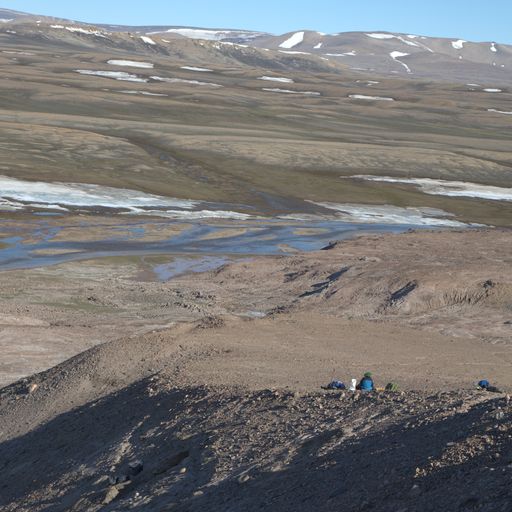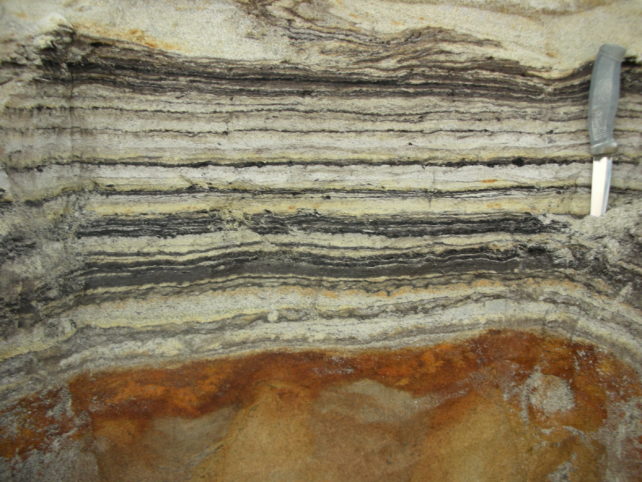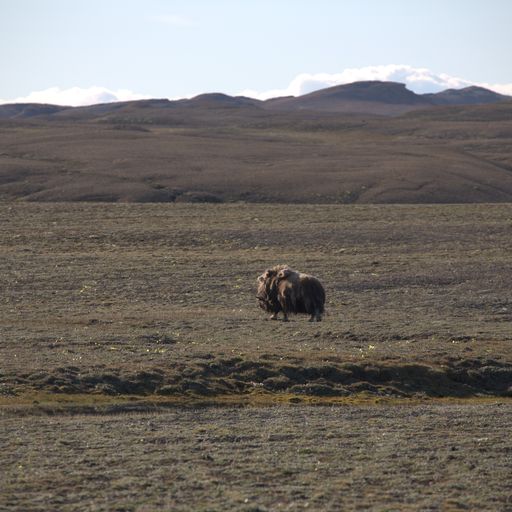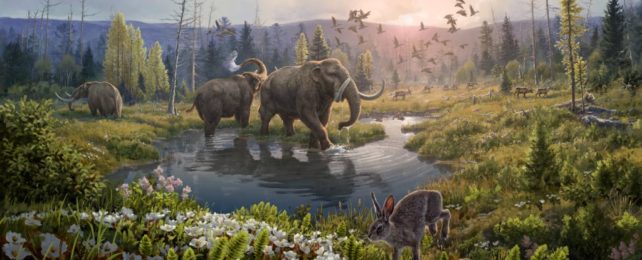Scientists have made a significant breakthrough in reconstructing the history of our planet.
Sedimentary deposits from the permafrost of Greenland contained recoverable environmental DNA dating back to around 2 million years ago. That's 1 million years older than the previous record – DNA from a woolly mammoth that roamed the Siberian tundra 1 million years ago.
This astonishing work has allowed a team of scientists to reconstruct an ancient landscape, revealing a world far removed from the icy shores of the Arctic Circle.
"A new chapter spanning 1 million extra years of history has finally been opened, and for the first time, we can look directly at the DNA of a past ecosystem that far back in time," says evolutionary geneticist Eske Willerslev of the University of Cambridge in the UK and the University of Copenhagen in Denmark.
"DNA can degrade quickly, but we've shown that under the right circumstances, we can now go back further in time than anyone could have dared imagine."

Time is not kind to the remains of living things; DNA will rapidly degrade thanks to environmental stresses (such as hungry microbes), weather, and geological processes. If ancient DNA is to survive, it usually does so locked up in teeth and bones, where it is relatively protected.
But material buried under the permafrost is also relatively protected.
Here, a range of samples collected from the ice and permafrost of the Kap København geologic formation in the mouth of a fjord in northern Greenland offered scientists the ability to recover and reconstruct environmental DNA from times long past.

Scientists obtained most of these samples years ago during other work; expeditions are expensive, so scientists often collect more than they need, just in case. These samples were sitting in storage, waiting for the right project to come along.
"It wasn't until a new generation of DNA extraction and sequencing equipment was developed that we've been able to locate and identify extremely small and damaged fragments of DNA in the sediment samples," explains geologist Kurt Kjær of the University of Copenhagen.
"It meant we were finally able to map a 2-million-year-old ecosystem."
The DNA recovered from the samples after much painstaking work would have been unusable just a few short years ago: The fragments were tiny, just nanometers in length, highly degraded, and very incomplete.

However, advances in genetic sequencing in the last few decades enabled scientists to build up a vast database of DNA from the world around us. These DNA libraries offered scientists a point of comparison for their challenging DNA fragments.
These libraries meant that scientists could painstakingly reconstruct the missing pieces for a census of the organisms whose genetic material was locked in rock for many millennia.
"The ancient DNA samples were found buried deep in sediment that had built up over 20,000 years," Kjær says. "The sediment was eventually preserved in ice or permafrost and, crucially, not disturbed by humans for 2 million years."
This reconstruction revealed a variety of lifeforms compatible with a surprisingly temperate climate. Scientists found animals related to reindeer and caribou, lemmings, geese, hares, and, interestingly, mastodons.
Ants, fleas, coral, and horseshoe crabs also all left their mark in the sediment, as did birch and poplar trees.
The mastodon DNA, the researchers noted, is particularly interesting. All the other species have relatives that remain in Greenland today; previously, it was thought that mastodons did not range as far north as Greenland.
Other DNA samples – collected from microorganisms and fungi – are still undergoing identification. A future paper will describe the full extent of the ecosystem to the best of the scientists' understanding.
However, some features already stand out that suggest a much warmer climate in the region during the Early Pleistocene – considerably warmer than current temperatures.

It hints, the researchers say, at Earth's future in the face of a changing climate.
"One of the key factors here is to what degree species will be able to adapt to the change in conditions arising from a significant increase in temperature. The data suggests that more species can evolve and adapt to wildly varying temperatures than previously thought," says geogeneticist Mikkel Pederson of the University of Copenhagen.
"But, crucially, these results show they need time to do this. The speed of today's global warming means organisms and species do not have that time, so the climate emergency remains a huge threat to biodiversity and the world – extinction is on the horizon for some species, including plants and trees."
But for scientists, the work is a massive leap forward. Now that environmental DNA has been successfully extracted and interpreted from clay and quartz, it might be possible to do the same with ancient deposits from other locations.
"If we can begin to explore ancient DNA in clay grains from Africa, we may be able to gather ground-breaking information about the origin of many different species – perhaps even new knowledge about the first humans and their ancestors," Willerslev says.
"The possibilities are endless."
The research has been published in Nature.
